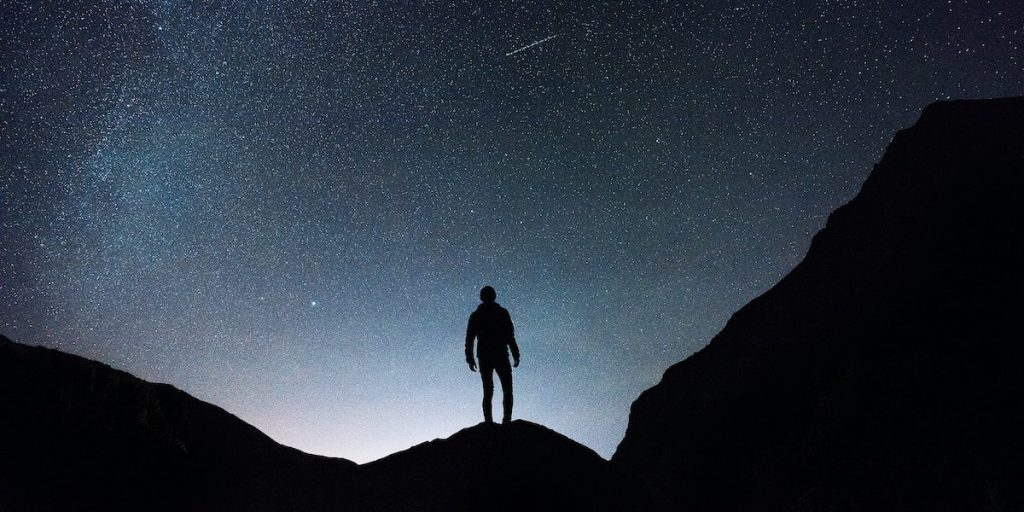As we likely all learned in elementary school, Thomas Edison invented the light bulb… right? Sort of, says best-selling science historian Steven Johnson. It turns out that the story of genius is more complicated than we think. Steven sat down with psychologist Scott Barry Kaufman, scientific director of the Imagination Institute, to discuss how creativity, innovation and genius truly happen.
This conversation has been excerpted from the “Open Minds” video series on American Express OPEN forum®. View the complete video and series for more on creativity.
View the complete video and series for more on creativity.
Steven Johnson: Over the last decade, there has been so much interesting research into our understanding of innovation and creativity. There’s been a lot of debate about the lone genius archetype, where people have a certain essential genius to them, and they isolate themselves and come up with a brilliant idea that changes the world. Is that a myth, or is there some truth to that?
Scott Barry Kaufman: With optimal creativity, you find people switching back and forth between moments of solitude and moments of collaboration. Often you need to give people a chance to have the solitude to reflect on something, to really flesh it out in their own way. Then when they bring it to the table and share it with coworkers, that’s when the synergy happens, and great insights tend to happen. You need both.
Johnson: My feeling is there are important insights that come out of people who are uniquely talented, but we have a warped sense of how important that is simply because the lone genius makes for better storytelling. I wrestled with this a lot.
The history of the light bulb, for instance—every kid learns that Thomas Edison invented the light bulb. It’s ingrained in your head as a school kid. But there were 15 different people inventing the light bulb in the same period of time. Edison ended up making the first commercially successful light bulb, but the ideas that made a light bulb imaginable in the first place were very much in a network of people whose work Edison was fully aware of. He even bought some of the patents for some of the work that they’d done. He also assembled a very multidisciplinary team to help him turn the light bulb into a viable commercial product.
And yet it’s really hard to tell a story where there are 15 protagonists—15 geniuses. It’s so much easier to say, “And there he was, plucky Tom Edison, coming up with this great idea!” We compress the story of genius down into an individual one because it makes for a stronger narrative, when in fact, the most important ideas involve some level of network collaboration.
Kaufman: It’s important to make the distinction between being sociable and drawing on other people’s work. These 15 people that contributed, it’s not like they all sat down at the table together and did it. My argument is more that it’s really important to have that solitude—even if you’re drawing on other people’s work during that solitude—to have that time to synthesize all these different ideas without the pressures of having to on the spot be sociable about it. That’s particularly useful for introverts, right?

Johnson: It’s a really important point, and relates, in a way, to one of the things I’ve written about that I see as a misconception about creativity, which is the overemphasis on the eureka moment.
It is absolutely true that there are moments of insight, where an idea seems to crystallize in your head, and often those moments come when you have time to just let your mind network with itself, rather than being out in the world. I think, again, the problem is one of storytelling: “Well, the apple falls from the tree, and oh, he’s got a theory of gravity.” That’s a good story. We like to hear moments of sudden insight or understanding.
If you look at the most transformative ideas, whether they’re commercial, business, technological or scientific ideas, we neglect that they have a long incubation period as hunches, as an intimation that something is interesting or intriguing but you can’t really put your finger on why. One of the defining characteristics of the people that I studied is that they’re very good at keeping those hunches alive for long periods of time and allowing themselves to follow those leads, even though they’re not sure where they’re being taken.
The eventual insight or eureka moment is often a collision between two or three different hunches that belong to different categories that somehow come together. So there are eureka moments. But if you haven’t set up an environment where you give yourself time to cultivate these hunches, you won’t get to that eureka moment. You have to start with that hunch cultivation first.
Kaufman: I have maybe 40 insights a day and 99 percent of them are junk. So just having an insight doesn’t mean it’s going to be a good one. It’s just a process, the way that our brain works. For brainstorming sessions, you allow your workers to go on their own and generate as many ideas as possible with no judgment. You really need to keep the judgment aspect off of that. Then you can bring everyone together and have them share. First give them that process where they can go a little crazy. Nothing’s off the table. Then, of course, you want to hone, but you don’t want to hone at that beginning stage.
Johnson: One thing I think is really fascinating and it’s been central to your work is how much recent neuroscience has illuminated how creativity works in the brain, and the imagination network of the brain. This is one of the most important new insights in our understanding of how the mind works in the last 20 or 30 years. It’s all about creativity.

Kaufman: For a very long time in the field of cognitive neuroscience there was this focus on what’s called the Executive Attention Network. It was really important for focusing on a task, for getting stuff done and implementing. And don’t get me wrong, it is extraordinarily important. Ask anyone who has great difficulty concentrating what that experience is like and it’s not a great experience. In fact, there is this research at Harvard showing that a wandering mind is an unhappy mind. Being able to control your mind is important.
But recently, a bunch of rogue cognitive neuroscientists began asking, “Well, is there any value to your own internal stream of consciousness to be able to daydream, to go inwards, to ignore the external environment?” I think it is a big paradigm shift in the field to have discovered what’s called the Imagination Brain Network, which we activate whenever we go inward; we’re really tied to our deepest passions, our deepest memories, our personal memories. It turns out creativity requires daydreaming on ourselves, in a way. Daydreaming is essential for creativity.
Johnson: A common theme of everything that we’ve been saying is that, in a sense, the creative process is not about one state. It’s the ability to move between different mental states: to have that daydreaming state, and then have that executive function—“I’ve got to get this done, I’ve got to ship a product”—and the ability to comfortably move among them, and also to move between solitude and being social.
The one thing I would add to it is that on some level, there’s a geographic quality as well. There’s a great story about this guy, Frederic Tudor, who basically invents the ice trade. He comes up with this idea before refrigeration, before the invention of freezers, basically carving frozen chunks of water from New England lakes and then shipping the stuff down to the Caribbean or the South in the early 1800s.

Ice becomes the second largest export in the United States behind cotton. This guy has this genius idea, transforms our economy, becomes a multi-millionaire because of this, and he gets the idea by traveling to the South and to the Caribbean as a 19-year-old who’d grown up in Boston, and he’s looking around in this new environment and thinking, “Wow. There’s no ice here.”
If you lived in the Caribbean in 1800, you would’ve never seen ice. It was just not possible to make ice and it never got below freezing there. He has this insight: “If I could get ice down to this environment, I could make money. It’s something that’s very scarce and valuable in this environment, and basically free up north.” What’s crucial to this story is that he physically moved, he went from an environment where he had all these expectations about how the world worked to some other place where the world was different and challenged his expectations. In a sense, from the physical migration from one place to another, the spark of an idea emerged. Sometimes it’s moving from one mental state to another, and sometimes it’s moving from a physical state to another that helps you unlock that creativity.
View the next video and series for more on creativity.





























